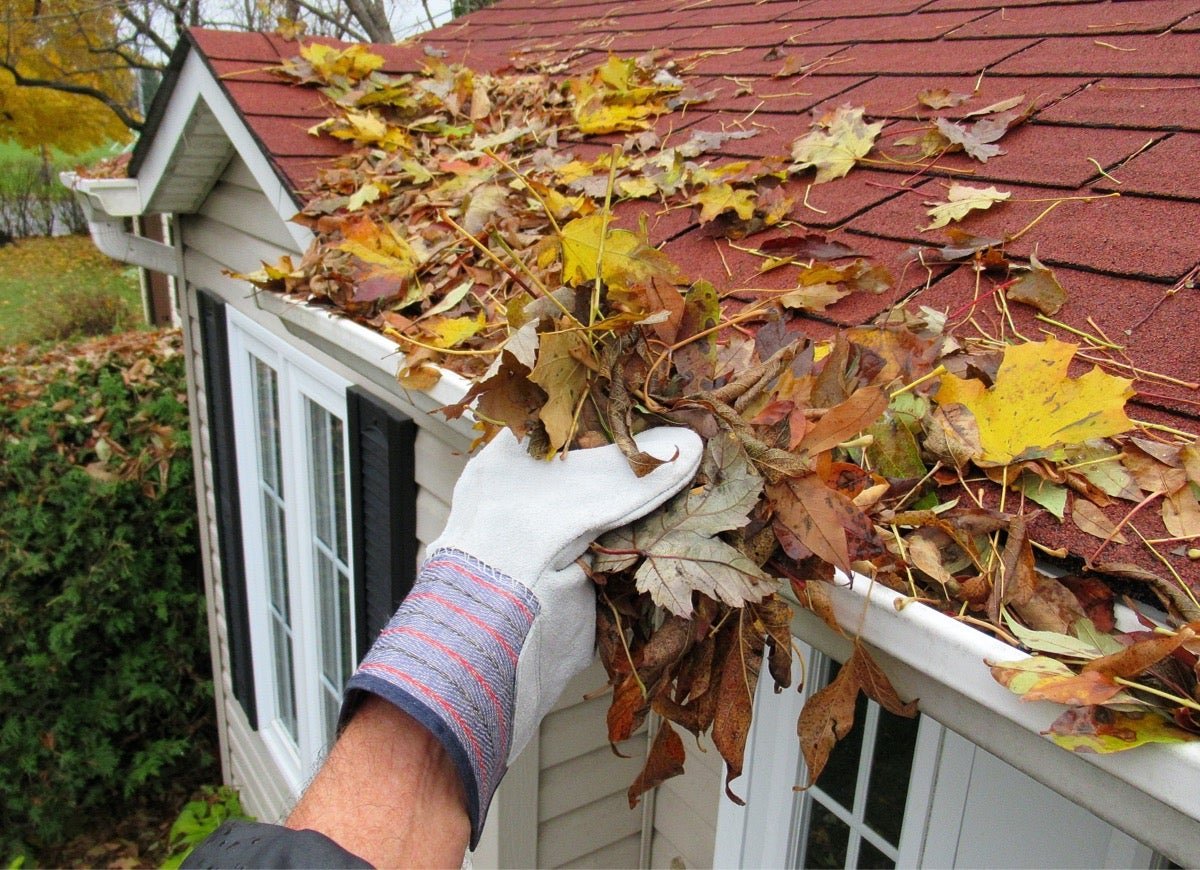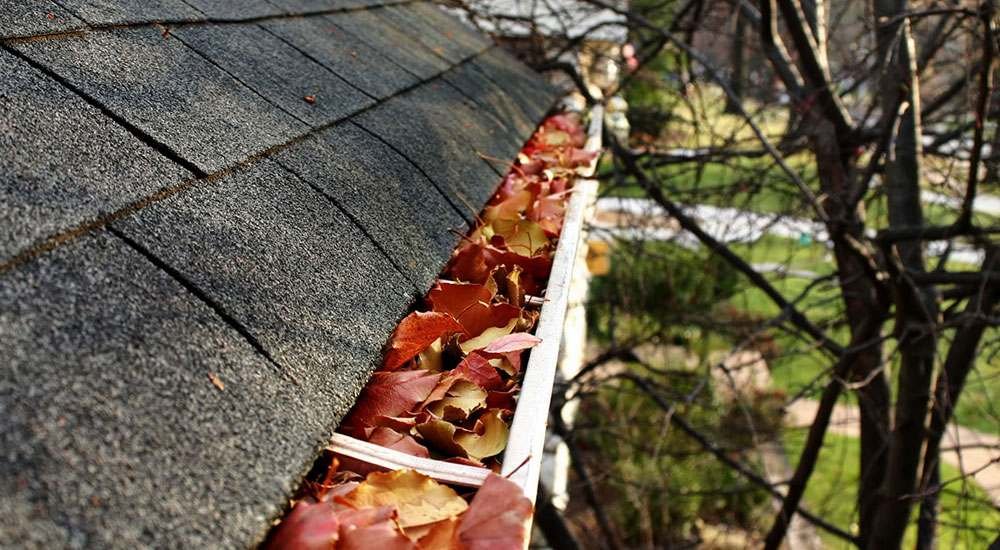How to Clean Your Gutters This Fall

The arrival of fall brings a change in scenery and a reminder for homeowners to prepare their homes for the colder months ahead. One of the essential tasks during this season is gutter cleaning. This chore, often overlooked, plays a crucial role in maintaining the health and safety of your home. Gutter cleaning is not just about maintaining the aesthetics of your home but also about protecting its structural integrity. Clogged gutters can lead to a multitude of problems, including water damage, pest infestations, and compromised foundations.
The changing leaves, while beautiful, can quickly fill your gutters with debris. This accumulation obstructs the flow of water, leading to potential damage. In regions with heavy rainfall or snow, this becomes even more critical. It’s not just leaves – twigs, bird nests, and other debris can also clog your gutters, causing water to overflow and potentially damage your home’s exterior and foundation.
Why Clean Gutters Matter
Gutters are an integral part of your home’s defense against water damage. They channel rainwater away from your home, protecting your roof, walls, foundation, and landscape. When gutters are clogged, water has nowhere to go but over the sides, leading to potential problems. Water overflow can damage your home’s siding, cause paint to peel, and even lead to rot in wooden components.
The risks extend beyond the immediate exterior. Water can pool around your home’s foundation, leading to cracks and weakening the structural integrity of your home. In winter, clogged gutters can lead to ice dams, a condition where water freezes near the roof’s edge, preventing proper drainage. This can cause significant roof damage and even interior leaks.
Regular gutter maintenance not only protects your home but also saves you money in the long run. Ignoring your gutters can lead to costly repairs and replacements. Clean gutters also help in pest control, as stagnant water in clogged gutters is a breeding ground for mosquitoes and other pests.
How Often Should You Clean Your Gutters?
The frequency of gutter cleaning largely depends on your home’s location and the surrounding environment. Generally, in Minnesota cleaning your gutters twice a year is a good rule of thumb. However, homes surrounded by trees, especially pines which shed needles all year round, may require more frequent cleaning.
Spring cleaning ensures your gutters are free from debris accumulated over the winter, which can include fallen branches and leaves. Fall cleaning is crucial to remove leaves and prepare your gutters for the increased rainfall or snowfall. If you experience heavy storms, it’s advisable to inspect and clean your gutters afterward to ensure they’re functioning correctly.
If you’re unsure how often to clean your gutters, observe how quickly debris accumulates. Regular inspections can help you determine a cleaning schedule that works best for your home.
DIY vs. Professional Gutter Cleaning
Deciding between DIY and professional gutter cleaning depends on several factors like comfort level, experience, and the complexity of your gutter system. DIY gutter cleaning can be cost-effective and gives you direct control over the process. However, it requires proper tools and a significant amount of time, especially for larger homes or complex roof designs.
Professional services, on the other hand, bring expertise, efficiency, and safety. Professionals have specialized tools and equipment, such as high-powered hoses and extendable cleaners, which make the process quicker and more thorough. They can also identify and address issues like leaks or weak spots in your gutter system.
For those not comfortable working on ladders or those with homes that have multiple stories or complex roof lines, hiring professionals is often the safer and more practical choice.

Determine if Gutters Should be Replaced, Repaired, or Cleaned
Assessing the Condition of Your Gutters
Before deciding whether to clean, repair, or replace your gutters, a thorough inspection is necessary. Look for signs of wear, such as cracks, holes, rust, or sagging sections. Also, check for water marks or damage on your home’s siding, which can indicate overflowing or leaking gutters.
When to Clean
If your gutters are generally in good shape but clogged with debris, a thorough cleaning is likely all that’s needed. Cleaning should be part of regular maintenance, especially after heavy storms or during fall when leaves are abundant.
When to Repair
Gutters needing minor fixes, like sealing small cracks or reattaching loose sections, can often be repaired. It’s cost-effective and can extend the life of your gutter system. Issues like leaking joints, minor holes, or loose fasteners typically fall under repairs.
When to Replace
Consider replacement if your gutters show extensive damage, such as large holes, severe rust, or widespread sagging. Also, if your gutters are old and repairs have become a frequent necessity, investing in a new gutter system may be more economical in the long run.
Guidelines for How to Clean Your Gutters and Downspouts
Preparation: Before you begin, gather all necessary tools. These include a sturdy ladder, gloves, a gutter scoop or garden trowel, a bucket for debris, and a hose for flushing gutters and downspouts.
Choosing the Right Ladder: Select a stable, extendable ladder appropriate for your home’s height. Ensure it is in good condition and set it on a firm, level surface.
Ladder Safety:
- Secure Placement: Position the ladder at a suitable angle – the bottom should be one foot away from the wall for every four feet of height.
- Stability is Key: Use ladder stabilizers or standoffs to protect your gutters and provide a more stable base.
- Work in Sections: Move the ladder frequently instead of overreaching, which can cause instability.
Cleaning Process
- Safety First: Set up your ladder securely. Wear gloves to protect your hands from sharp debris and potential animal droppings.
- Remove Debris: Start at the downspout and work away, removing leaves, twigs, and other debris. Collect this in a bucket or drop cloth.
- Inspect as You Go: As you clean, inspect your gutters for any damage or wear.
- Flush Gutters and Downspouts: Use a hose to flush out the gutters, checking for proper water flow and any leaks. Ensure that the water flows freely from the downspouts. If it doesn’t, there might be a clog to clear.
After Cleaning: Once cleaning is complete, take the opportunity to inspect your gutters for any needed repairs or signs of wear. Once the gutters are clear, repair any sagging metal. You can do this by mounting a gutter hanger.




